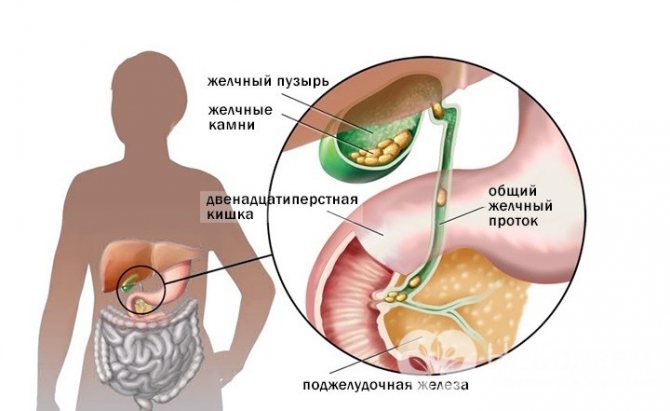24 Hour Emergency
Open 24/7 for convenience, quick and easy access
Call us
+998 99 017-36-825/1 Building, 1 District, Chilanzar District
Tashkent, UzbekistanMon-Fri: 09:00-18:00: Sat: 09:00-15:00.
info@gmed.uz




Stones in the gallbladder are a symptom of cholelithiasis, cholelithiasis. Bile contains components that can precipitate, accumulate and form seals - stones in the cavity of the gallbladder or bile ducts. The presence of such inclusions leads to violations of the outflow of bile, inflammatory processes in the membranes of the bladder, infection of the organ and reduces the efficiency of the biliary system of the body.
Gallstones are extremely rare in people under the age of 25. Their presence may be accompanied by
but with severe suffering, when they pass from the gallbladder through the bile duct into the duodenum. If they have reached a large size in the gallbladder, so that they fill the entire lumen of the duct or even exceed it with their diameter, then phenomena of the so-called hepatic or biliary colic are detected. The mucous membrane of the narrow wrinkled duct is strongly irritated; extremely painful contractions appear
scheniya its muscle layer; patients complain of burning, boring or stabbing pains in the liver, radiating to the hypochondrium or shoulder. Patients are restless, rush about, cold sweat appears, the pulse weakens and slows down. Very sensitive persons even have convulsions, fainting, sometimes even heart paralysis and death. Colic is often accompanied by nausea, vomiting, and constipation. The number and duration of attacks are very different. As soon as the stone passed through the duct of the gallbladder, the pain instantly disappears, but then resumes as soon as the stone reaches the outlet of the common bile duct.
Causes of occurrence:
the leading factor is considered to be an increase in such a characteristic of bile as lithogenicity, which occurs as a result of excessive intake
ia cholesterol;
dyskinesia, or a decrease in the functional ability of the gallbladder to contract and push bile into the ducts;
hypertension of bile in the organ due to narrowing of the neck of the gallbladder, which also leads to stagnation of bile;
localized or general infectious processes that reduce the efficiency of the activity of the organs of the hepatobiliary system.
There are various risk factors that increase the likelihood of developing cholelithiasis and the formation of gallstones:
belonging to the female sex: women suffer from stones that form in the gallbladder, much more often than men;
elderly and senile age;
the period of pregnancy, since an increase in estrogen levels promotes the secretion of cholesterol into bile;
irrational diets, fasting, weight loss for various reasons;
long courses of parenteral nutrition;
long-term use of drugs containing estrogen, oral contraceptives, sandostatin, ceftriaxone, etc.;
diabetes;
some diseases of the gastrointestinal tract, hepatobiliary organs, etc.
Treatment.
Complicated forms of cholelithiasis and prevention of their complications are subject to treatment. In the presence of stones without a clinical picture of cholecystitis, therapy consists in following a diet, regimen, maintaining an active lifestyle to reduce the likelihood of bile stasis and related complications, as well as taking drugs that destroy the structure of stones (Chenofalk, Ursosan and others). With single inclusions of stones-calculi and the absence of signs of the disease in modern medicine, the method of shock wave therapy is used.
Conservative therapy includes several procedures and techniques based on the well-known formula "cold, hunger
and peace"
complete hunger with vomiting, if the attack is not accompanied by vomiting, you can drink water;
cold (ice) on the area of the right hypochondrium, the method of local hypothermia to reduce inflammation and hypertension of the gallbladder;
antibacterial drugs in the inflammatory process;
detoxification therapy and forcing the withdrawal of fluid from the body with diuretic drugs;
relief of pain attacks with analgesics (Maxigan, Analgin) and antispasmodic drugs (Papaverine, No-Shpa, Baralgin, Platifillin, etc.) or combined medicines with analgesic and antispasmodic effects.
Surgical treatment as a method of therapy is prescribed for frequent attacks of acute cholecystitis, large stones, destructive course of the disease and the presence of severe complications. The technique of surgical treatment can be based on open or laparoscopic penetration and various options for manipulating the gallbladder.
Tashkent clinic "Gatling-med", equipped with the latest medical technologies and doctors with more than 10 years of experience, is ready to answer all your questions and provide proper treatment. We guarantee the highest quality of treatment and care for our patients.
Open 24/7 for convenience, quick and easy access
Qualified and certified doctors for quality healthcare
Cost effective, comprehensive and clinical laboratory services
